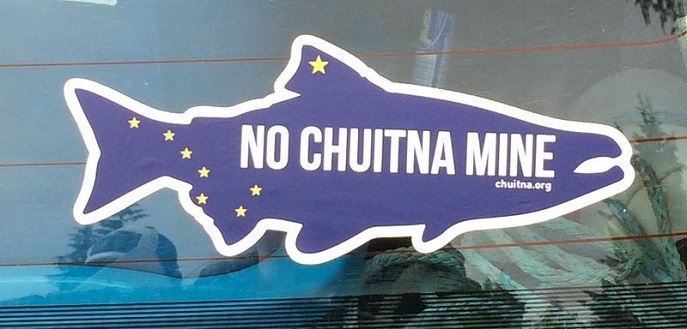Citizen action and legal pressure have stopped two major coal mining projects in Alaska – including the largest mine ever proposed in the state. These developments follow the recent closure of Alaska’s only coal export terminal. It’s now more clear than ever that coal belongs to the past, and that Alaska’s future lies with wild places, healthy salmon streams, and strong communities.
The Chuitna mine would have been the largest coal mine ever developed in Alaska. Efforts to open the strip mine stretch back to the 1970s, when coal companies first attempted to develop huge coal reserves around the Chuitna River on the western side of Cook Inlet. The most recent mining proposal was initiated in 2006 by PacRim Coal. As proposed, the strip mine would have destroyed approximately 30 square miles of wildlife habitat, including over 12 miles of vital salmon streams. Although the company claimed it would restore the devastated salmon streams after mining was complete, there is no precedent for restoration on that scale, and experts explained that it simply isn’t possible. The mine would have produced 300 million tons of coal over 25 years, and would have opened the door to a coal reserve totaling 1 billion tons. Grassroots activists, local native villages, and state and national organizations – including the Sierra Club – opposed the project from the start, and were gearing up to challenge the state and federal permits required for the mine’s development. Faced with this pressure, in late March 2017 the company announced it was shelving the project to pursue other investments outside of Alaska. Groups opposed to the project will now work to make sure that this reprieve becomes permanent, including by working with the owner of the coal – the Alaska Mental Health Trust – to prevent any future mining projects.
The Wishbone Hill Mine, located in the Matanuska Valley north of Anchorage, is another misguided coal mining project stopped after decades in development. Coal exploration in the area began in the 1980s, and the state issued the mining permit in 1991. The mine was passed from owner to owner for the next several years, though no mining was ever started. During that time, the Matanuska Valley changed dramatically, with a residential community becoming established in the area. When it appeared that mining operations were poised to begin in 2010, a coalition of local, regional, tribal and national groups – including Sierra Club and led by Trustees for Alaska – opposed the mine. Fortunately, the Surface Mining Act (SMCRA) includes a provision stating that a mine permit automatically expires if no mining begins within three years after the permit is issued. This common sense provision is intended, among other things, to make sure that mining permits are based on the most up to date information. Although the three-year automatic termination deadline can be extended if certain criteria are met, the Wishbone Hill Mine’s owners failed to request an extension, possibly because they knew they didn’t qualify. In 2016, a federal court agreed with our interpretation of the law, and in early 2017 the federal Office of Surface Mining determined that the permit was no longer valid. Should the company decide that it wants to continue developing this mine (a decision that’s far from certain given the depressed price of coal), it will need to restart the permitting process, which means taking into account the most up to date environmental science as well as recent changes to the local community.
That coal mining is the wrong choice for Alaska was made very clear in August 2016 when the only coal export facility in the state, in Seward, was shuttered. This dirty coal terminal had long been a major concern for the local community, as its open coal piles and extensive over-water conveyor systems produced clouds of blown coal dust and dropped chunks of coal directly into Resurrection Bay. The closure of the facility followed a successful Clean Water Act citizen enforcement suit brought by Sierra Club and Trustees for Alaska.
For many years, proposed coal projects in Alaska were based on the belief that there was a market for the coal overseas. But the closure of the state’s only export facility makes clear that there is no such demand, and that the state should focus instead on protecting and promoting its most valuable resources: healthy salmon streams, stunning wilderness, and strong communities.
